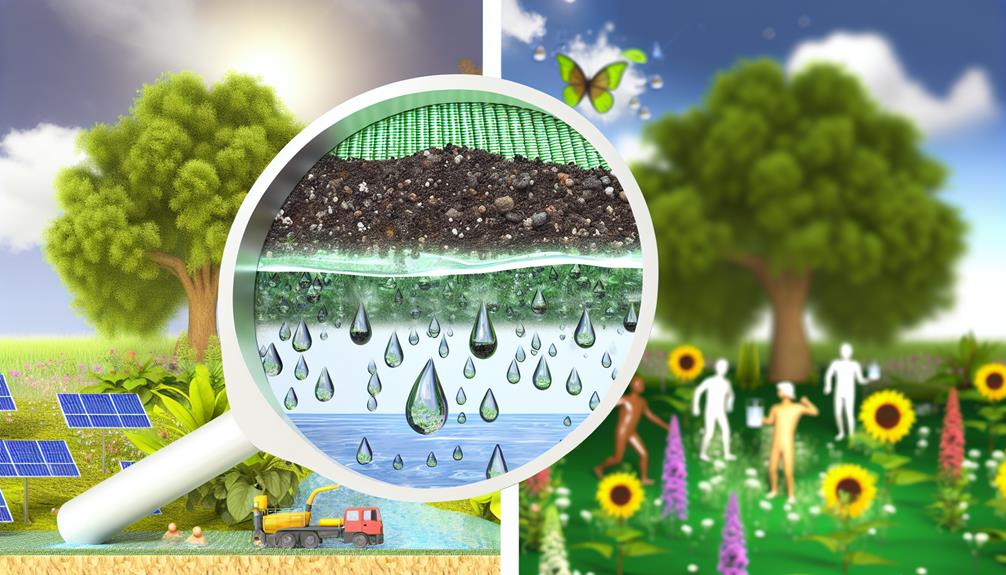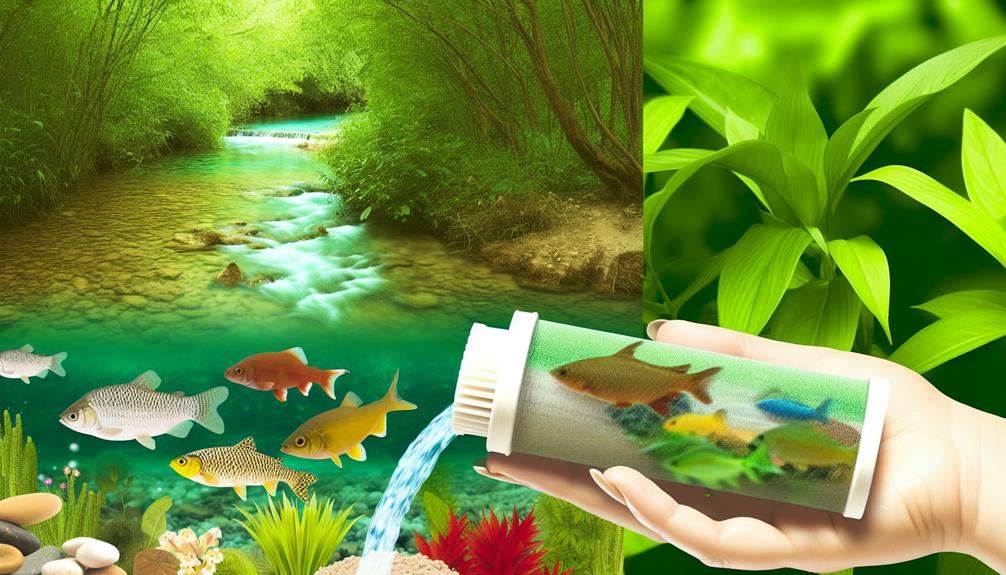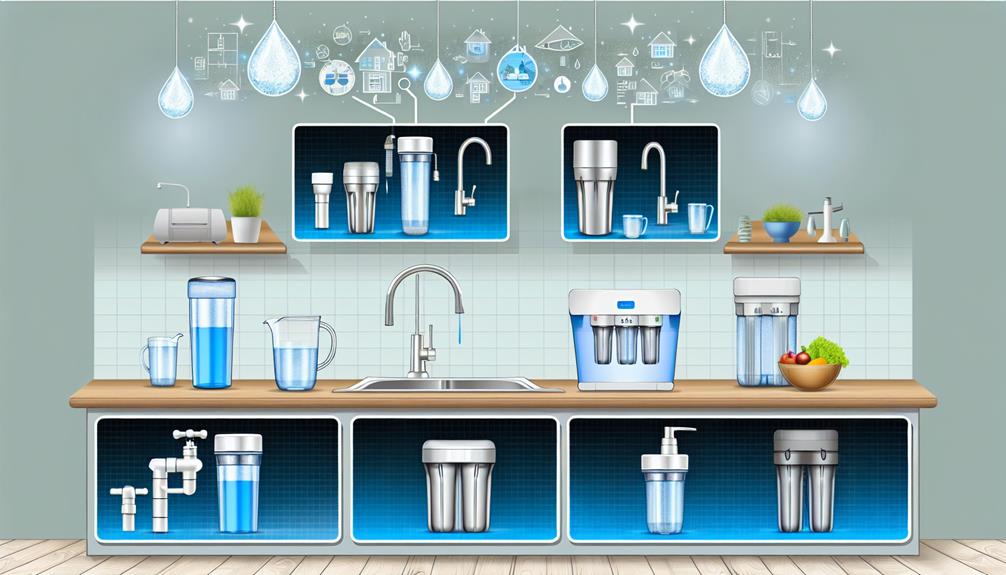Necessity is the mother of invention, and you'll find no clearer evidence of this than in the field of sustainable water filtration.
As you explore the latest innovations, you'll discover that cutting-edge technologies such as graphene-based filters and solar-powered purification systems are not just academic exercises; they're real-world solutions transforming lives in communities around the globe.
These advances offer you a glimpse into a future where clean water isn't a luxury but a given. With the development of biodegradable materials and the application of nanotechnology, the promise of accessible and eco-friendly water treatment is closer than ever.
Yet, as you consider the implications of these technologies, consider also the challenges that remain unsolved, inviting you to ponder the next steps in this crucial journey towards water security.
Revolutionary Graphene-Based Filters

Graphene-based filters represent a significant advancement in water purification technology, leveraging the material's exceptional permeability and selectivity to efficiently remove contaminants. You'll find that these filters capitalize on graphene's unique properties to deliver superior performance. As a single layer of carbon atoms arranged in a hexagonal lattice, graphene exhibits remarkable mechanical strength and chemical stability, contributing to the sustainability of the filtration systems.
The sustainability of graphene filters is closely tied to their extended lifespan. Unlike traditional filters that may require frequent replacement, graphene's durability ensures a longer operational period before the need for servicing. This not only reduces waste but also lowers the long-term costs associated with water purification. Moreover, the high surface area of graphene facilitates the adsorption of a wide range of contaminants, from organic molecules to heavy metals, without the need for complex and energy-intensive processes.
Your understanding of these filters should recognize that their longevity and efficiency are central to their design. With graphene sustainability in mind, researchers continue to refine the production processes, aiming to minimize the environmental footprint while maximizing filter lifespan. As a result, the integration of graphene-based filters in water treatment infrastructure presents a promising approach to addressing global water scarcity challenges with a focus on both performance and sustainability.
Solar-Powered Purification Systems
Harnessing the sun's abundant energy, solar-powered purification systems offer an innovative and eco-friendly solution to water treatment challenges. These systems are increasingly pivotal in areas where traditional energy resources are scarce or expensive. By using solar energy, they provide a self-sufficient method to purify water, which is particularly beneficial for remote locations.
In analyzing their impact, consider the following points:
- Desalination Efficiency: Solar-powered systems are enhancing desalination processes, making them more accessible and efficient. The use of solar distillation and solar-powered reverse osmosis has shown a considerable reduction in energy consumption compared to conventional desalination methods.
- Cost-Effectiveness: Initial setup costs are offset over time by the lack of fuel or electricity bills. Maintenance expenses are also typically lower, due to fewer moving parts and the durability of solar panels.
- Environmental Impact: These systems emit no greenhouse gases during operation, contributing to a reduction in the carbon footprint associated with water purification.
- Portability: Portable purifiers, designed for individual or small community use, can be deployed quickly in emergency situations or used in transient communities, providing immediate access to clean water without the need for infrastructure.
These systems mark a significant step toward sustainable water management and have the potential to transform water accessibility on a global scale.
Biodegradable Filtration Materials

As we advance toward more sustainable practices, the development of biodegradable filtration materials is revolutionizing the way we approach water purification. Algae-based solutions are emerging as a key innovation in this field. These materials, derived from abundant natural resources, offer a renewable and eco-friendly alternative to conventional synthetic filters that often contribute to long-term waste issues.
Algae-based filters capitalize on the innate adsorptive and gelling properties of algae to remove contaminants. As a result, they present a low-energy, biodegradable option that can decompose naturally without leaving harmful residues. The effectiveness of algae in water filtration isn't only evident in laboratory settings but is also being confirmed through real-world applications in communities with limited access to clean water.
Parallel to algae, chitin—a biopolymer found in the exoskeletons of crustaceans and insects—is being harnessed for its filtration potential. Chitin effectiveness in water purification stems from its ability to bind with heavy metals and other pollutants. As a filtration material, chitin offers the dual benefits of high performance and environmental compatibility. By converting waste from the seafood industry into chitin-based filters, researchers are creating a circular economy that upholds sustainability principles while addressing global water quality challenges.
Nanotechnology in Water Treatment
Every drop of water passing through nanotechnology-enhanced filters undergoes a remarkable transformation, as these microscopic structures work to remove even the tiniest contaminants with unparalleled efficiency. You're witnessing a revolution in water treatment, where the role of nanotechnology is pivotal for achieving purity and sustainability.
Consider these aspects of nanotechnology in water treatment:
- Increased Contaminant Selectivity: Nanofilters possess the ability to differentiate between harmful contaminants and vital minerals, allowing for selective filtration. This precise removal is critical for both health and environmental reasons, ensuring water is safe for consumption without stripping away beneficial elements.
- Enhanced Membrane Longevity: With nanotechnology, membranes can last longer due to their resistance to clogging and reduced need for harsh chemical cleaning. Durable membranes translate to less frequent replacements and maintenance, contributing to a sustainable filtration system.
- Targeted Pathogen Removal: Nanotechnology enables the targeting of specific pathogens at the molecular level, reducing the risk of waterborne diseases. This targeted approach is essential in areas where access to clean water is a challenge.
- Efficient Pollutant Detoxification: Nanoparticles can break down complex pollutants into harmless substances, offering a more efficient way to detoxify water from industrial and agricultural sources.
Community-Driven Filtration Projects

Building on the advancements in nanotechnology-enhanced water treatment, community-driven filtration projects are increasingly deploying these innovations to address local water purity challenges effectively. Local empowerment is at the forefront of these initiatives, with communities taking ownership of both the implementation and maintenance of the technology. This approach ensures that solutions are tailored to the specific needs and circumstances of each community, which is vital for the sustainability and effectiveness of the projects.
The technical aspect involves the integration of culturally adaptive features to align with the community's norms and practices. By doing so, you're not just introducing a piece of technology but incorporating a system that respects and works within the framework of local customs. It's a delicate balance that requires thorough understanding and consideration of cultural nuances.
Analytically, the success of these projects is measured by both the increase in access to clean water and the community's ability to sustain these systems independently. The objective is to leave behind not just a physical filtration system, but a legacy of knowledge and capability. This ensures that the benefits of clean water and the empowerment it brings continue to resonate long after the initial intervention.
Conclusion
You've witnessed how innovative water filtration technologies are changing the game. Graphene-based filters are setting new efficiency benchmarks, while solar-powered systems offer renewable solutions.
Biodegradable materials are reducing environmental footprints, and nanotechnology is enhancing purification precision.
Importantly, community-driven projects ensure that these advancements reach those who need them most.
Collectively, these sustainable breakthroughs aren't just transforming lives—they're reshaping the future of global water security.

